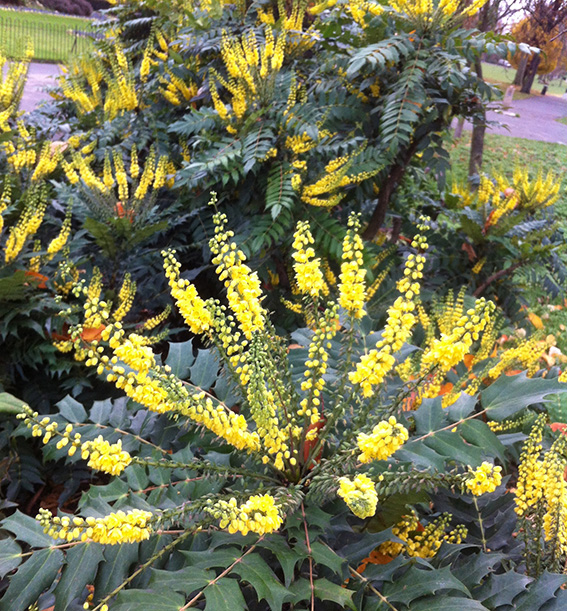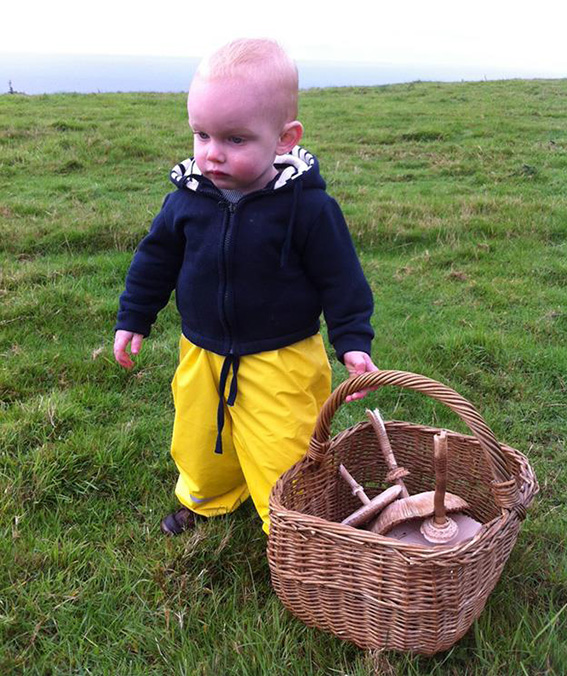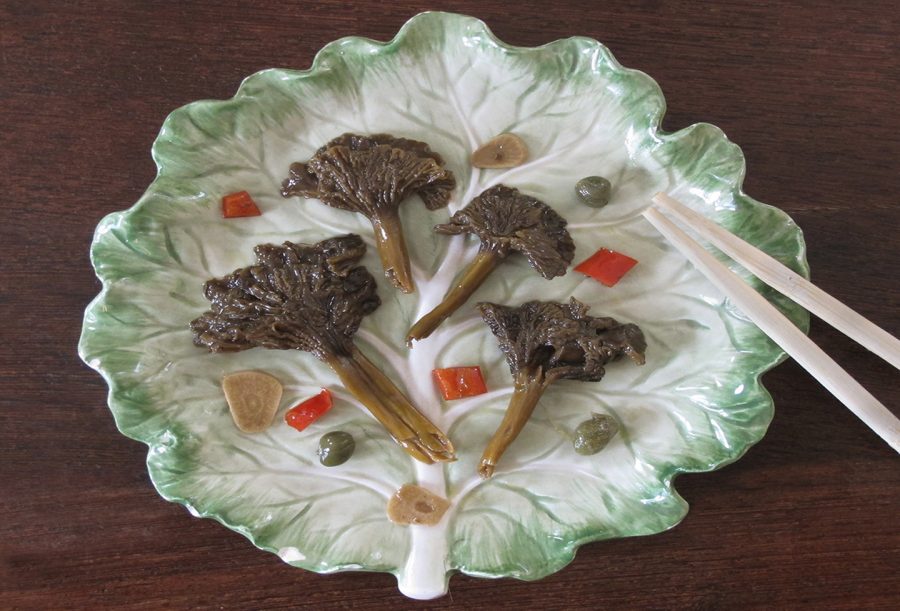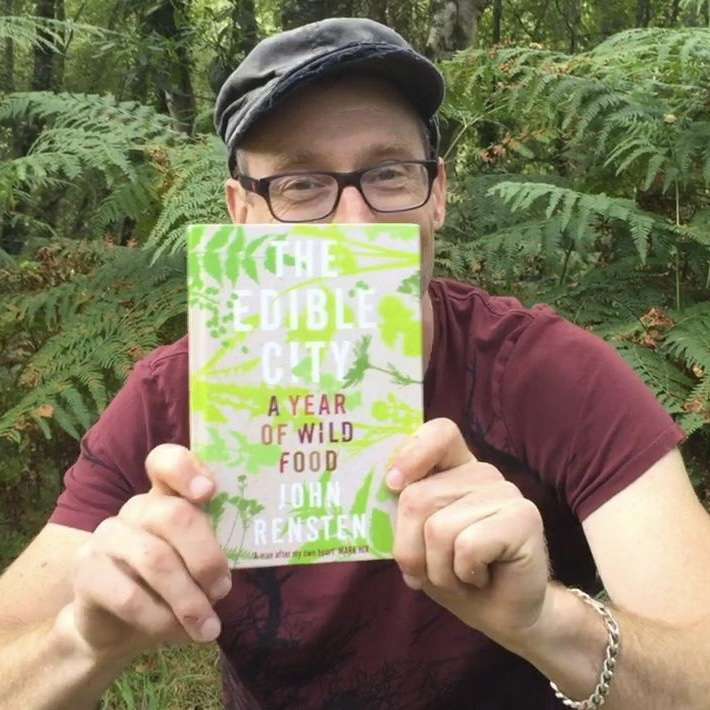It’s a lovely month January, a wonderful time in every way and my absolute favourite part of the year! Did that sound convincing? I hope so…..Really though, it can be quite a tough time of year but rather than focusing on the negatives I’d like to suggest a few things to help pass the time and stay healthy in the process. With all the self inflicted sobriety that takes place, it’s the perfect opportunity to get some reading done, sharpen the mind for the year ahead and even learn a few new skills. This month I have been foraging for lots of the Winter salads discussed in my November blog, taking a trip to the coast to rake up a few buckets of cockles and clams, making an industrial quantity of super spicy winter chutney (recipe below) as well as spending a few days in the city looking at some of the unusual seasonal foraging opportunities on offer. I’ve also been doing plenty of research into this year’s “ID wish list”, that’s basically the next 20-30 plants I have yet to discover and that I intend to hunt for, pick, experiment with and eventually eat. I hope you enjoy this slightly odd collection of activities and have time to try at least one them. Next month I have the pleasure, and easy task, of featuring some brilliant recipes, generously shared by a few of my favourite foragers from the UK and USA.
1. Wonderful Winter Chanterelle : Chef Rob’s Japanese style pickled fungi.
Some Winters I pick this amazing frost resistant fungi when there is snow on the ground and even though I waited almost a year for them to come out so I could make this pickle, I can see no reason why it wouldn’t work equally well with all sorts of other mushrooms, although it won’t look quite as cool. This is a great recipe, ready the day after you make it and perfect to bring a bit of zing to any Winter plateful. It took 6 texts, 4 tweets, and 5 emails and 3 requests in person before Rob, head Chef at Clerkenwell’s Modern Pantry, generously gave up this most prized of culinary secrets.
https://www.foragelondon.co.uk/pickled-winter-chanterelle
2. John’s Hardcore Winter Chutney : I finally go public with my secret recipe.
My greatest creation! However, the truth is, this was not my recipe to start with and I would like to thank Sue Owen for the original. Having said that, I have bastardised Sue’s version to such an extent that it bears little resemblance to its predecessor and is often too spicy for mere mortals to cope with. As I did with Sue’s version, feel free to take gross liberties with all proportions, ingredients etc.
https://www.foragelondon.co.uk/killer-chutney-recipe/
3. Recommended Reading : Sharpening the brain and preparing for next year.

Each year I like to find a selection of new wild foods to become my quarry for the seasons ahead. This time, amongst others, I’m on the look out for Woad, Sneezewort, Bath Asparagus, Buffalo Currants and the elusive Volvaleria bombycina ( a delicious mushroom that grows on or inside dead trees). I try to read plenty of books or at least buy them to use for reference and sometimes it’s the least likely that turn out to be invaluable and the most appealing that are pretty much a waste of time. They all, however, have their merits, even a very poor fungi guide I bought which redeems itself based purely on size…it has massive pictures which makes it quite handy when used for ID with other, far more accurate books. Here are a couple of my most recent purchases that I can thoroughly recommend.
Mushrooms by Peter Marren. Not so much an ID guide and not really for beginners, this is a fantastic book looking at the weird and wonderful world of UK mushrooms, discussing all the arguments for and against foraging and full of great info on the importance of fungi in our eco system. Perhaps too nerdy for some people and not nerdy enough for others; for me it was just right.
The Thrifty Forager by Alys Fowler. I’m not a huge fan of the “Cath Kidston” style of this book but each to his or her own (and it’s infinitely better than any book I’ve published i.e. none). That aside, this contains a great mix of foraging, gardening and cooking, perfectly suited for Londoners or any other city dwellers. Plus it doesn’t try to be a comprehensive guide, more a selection of the things that Alys is so obviously passionate about and this makes it a very easy book to learn from and dip in and out of at will, there being no pressure to try to absorb it all like a text book. A good New Years present I’d say and a nice way to lead someone gently away from gardening and over to foraging.
4. Weird Winter Foraging.

Apart from all the late season fruits and the wonderful selection of Winter salad plants that our city has to offer, there are a few slightly bizarre edibles that love the coldest season of the year. Mahonia japonica doesn’t have a common name as far as I know but it’s very similar to Oregon Grape and loved as a border and hedge plant by park planners and gardeners. Why do we care? Because not only does it produce huge spikes of sweet/sharp little grapes later in the year, during November to January, this firework display of a plant, throws up countless racemes of tasty little yellow flowers, perfect to cheer up any otherwise drab Winter dish. Next, Snowberries! The jury is most definitely OUT when it comes to these. Numerous sources report them as toxic and just as many as edible although not tasting great. My default authority is the excellent Plants For A Future and here’s what they say although it has been my experience that rather than tasting bitter, these berries taste “neutral” and my thoughts on eating them were more based on a decoration for a winter desert, I mean, ” Home made ice cream with Snowberries” sound pretty tempting. More research need here and whatever the outcome I’d only be suggesting ingesting a tiny quantity and only once a year. Another plant I have previously “pooh poohed” ( I’ve been waiting for ages to use that expression) is Catmint; it’s just so bitter and full of essential oils…not so in mid Winter, when the tiny new leaves taste like “Coolmint” and make an amazing addition to a wild salad ( perhaps a sorbet needs to be made from it). The same can be said for many other plants that we find just too bitter or too strong at other times of years, come deepest winter, they are just miniature versions of themselves and often this applies to their taste too. My advice; Go to the park, find something in flower or fruit, ID it properly, proceed to the kitchen or the compost heap as appropriate .
5. Jellies , jams, cordials, and the joys of existing in a micro climate.
Elderberries still on the branch is December, Crab apples still clinging on in January while the ground is covered in snow ; London really does offer a year round foragers playground. This season there are also masses of Rowan Berries on the branches with Crab and Rowan making an excellent jelly or jam if you have a spare hour one cold day. I have also seen plenty of Sea Buckthorn around too. All of these wild fruits could find their way into a mixed fruit cordial or better still, make some fruit “leathers”, basically sweet chewy strips of dried and seasoned mixed fruit. I usually mix and match wild and not so wild ingredients at this time of year, a few plums from my local shop usually joining whatever I can forage. You’ll find a some great recipes for all these suggestions in Adele Nozedar’s Hedgerow Handbook or Alys Fowler’s book recommended above.

To finish this month’s blog, here’s a photo of my son Oscar, added for no real reason other than that it makes me smile.

